If you’re a retailer interested in maximising your sales and profitability while simultaneously pleasing your customers, you can’t go wrong with data-driven planograms. In reality, they are a must. Plan-o-grams, POGs, shelf plans, space plans or schematics. However you refer to planograms, there are plenty of good reasons for you to invest in them.
We're only focusing on the reasons and benefits for retailers in this article. However, it's just as critical that you invest in planograms if you're a supplier. You're welcome to read more about why here. It's also worth pointing out that we have not ranked the below benefits in order of importance.
Instead, they are a collection of reasons for using data-driven planograms in your retail business because they are all interlinked.
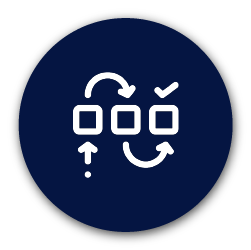
1. Planograms allow you to group your products in a logical flow
When building a planogram, you must consider the various details of each product within the category. That includes the sales data of each item and how often each sells each month.
Doing so means you can place each product in the right place on the shelf according to their overall contribution to product grouping. That includes providing the correct facings and how many items to put on the shelf.
There are, of course, merchandising principles and tactics that you would also need to adhere to meet your goals.
Suffice to say, all of the above helps you maximise your sales for the category as you present a logical flow of products, thereby ensuring a more pleasant shopping experience for your customers.
Let's say, for example, you stock small appliances. For this category, you could place your premium items first. These will be the products your customers see when they walk into the aisle. Then, as they move further, you can begin stocking your less expensive brands and items until shoppers arrive at economy items at the end of your aisle.
Doing so can help you establish a perception of value. It's also logical because when looking at your data, you can understand that is how your customers shop the specific category.
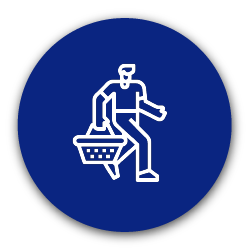
2. Planograms improve shopper satisfaction
In the previous point, we mentioned that providing a logical flow can help improve the shopper experience for your customers. That shows that planograms play a vital role in shopper satisfaction.
By creating a logical product flow for specific categories, your customers can find what they want without fuss. That's not only because you're using data to understand where to place an item on the shelf. You're also building a visually-appealing layout.
Let's use the example of fresh milk. In any store, you'd likely find it has multiple facings and takes up a significant area in the Fresh Dairy department. That's because its monthly sales and units movement data shows that it deserves that shelf space. To keep your customers happy, you'd want to give fresh milk a prominent spot on the shelf.
The same goes for any category.
Imagine building a category without a planogram. You might find your in-store staff needing to help customers find the products they want because they aren't visible on the shelf. That does happen. While it's an opportunity to show your excellent customer service levels, it's also a problem you can't ignore.
If you find your customers constantly asking your staff where to find an item in the store, you need to consider if the shopping experience is unpleasant. Also, do you use data-driven planograms?
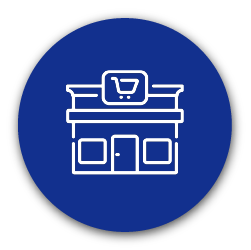
3. Planograms help improve your store and brand image
The fact that planograms can improve shopper satisfaction means that they can also boost your store image. It goes back to the logical product flow.
By creating a logical product flow and consistency in all of your stores, you enhance the shopping experience. That can entice shoppers to choose your store over others because they know what to expect. They know that no matter which of your stores they visit, they can have the same experience.
They can find the products they want to buy without fuss. Then, once done shopping, the word spreads about how your store provides them with all they need. More importantly, your image improves because you have new shoppers visiting as they heard great things about your store.
Of course, you can't forget about the impact of your chosen merchandising techniques, strategies and tactics too. You could brand block products in a category, for example, thereby giving your store an organised feel that is also aesthetically pleasing.
Because you're using data-driven planograms, you can make any section easier to shop. Instead of taking 20 minutes to shop for one or two items, you can help reduce that time to 10 minutes or less. That's only an example.
However, the point remains. You want your customers to spend more time in your store. However, it's better to have them spend less time per product and more time filling up their basket because they can find items quickly.
While it improves your sales - more about that in the below point - the more time a customer spends in-store, the more time you have to impress them and improve your image.
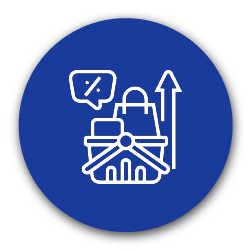
4. Planograms increase your sales and profitability
Up until now, we've mentioned what planograms can help you achieve. While all of the above are by-products, we haven't yet mentioned the purpose of planograms.
In simple terms, the purpose of any planogram is to increase your sales and profitability. It achieves that by ensuring your shelf displays offer the ideal selection of products to reach your shoppers at the right time and place.
It can only do that by looking at your data.
Let's consider how we build planograms at DotActiv. We look at weekly movement and days of supply (DOS). Using these metrics means we can ensure that each product receives the correct number of facings on the shelf. Your fast-selling items receive more space while you reduce the space given to your slow-moving products. That means we can balance stock more effectively, thereby assisting with stock management.
Achieving all of the above leads to an increase in your sales and profitability. You only need to consider the various case studies (which you can browse here) that we've developed to see this in action.
After planogramming one category, sales increased by 147%. Another grew by 200% while others have also seen significant growth. And these are only the ones that we have made public. Countless others show the positive impact planograms can have on your bottom line.
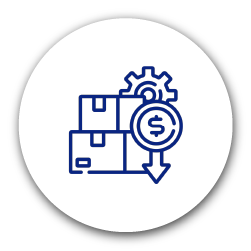
5. Planograms help you reduce shelf replenishment costs
The purpose of planograms may be to increase your sales and profitability. However, they wouldn't be effective if they also didn't help you save on costs.
Fortunately, a well-built shelf plan does that. It helps you to reduce costs associated with shelf replenishment because when building one, you aim to ensure you align the days of supply of each of your products.
A planogram built using the DotActiv software, for example, will use data from a given period to create accurate days of supply for your products. You'll then know how many days it will take before the current amount of stock for a specific SKU depletes before you need to restock it.
Doing so means that all products run out at a similar time so that you only need to replenish your shelves once per month. That's instead of multiple times because one product runs out unexpectedly while you still have plenty of stock of another.
You also run the risk of failing to meet consumer demand if you don't consider how long it takes to run out of stock for a product. Imagine a customer coming into your store and finding shelves half empty because you’ve run out of stock of a popular product. In reality, the product doesn’t even need to be popular.
If there is a gap on your shelf and you haven’t filled it, you’ll have a messy looking shelf. That impacts your store image.
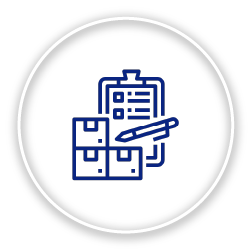
6. Planograms help you reduce excess inventory holding
Together with the reduction in shelf replenishment costs is the fact that a planogram can also help reduce excess inventory holding.
How?
We have mentioned in passing earlier in this article. Giving less space to your underperforming products and more space to your top performers allows you to balance out your DOS. That reduces the problem of excess inventory.
If you consider using data to build your planograms, you can complete data analysis to understand the right product mix. In reality, data analysis can improve all of your category management efforts. By stocking the products your customers want, there is less of a risk of holding products that don't sell.
If you do find that a product doesn't sell as well as you had initially hoped, you can either reduce its shelf space or phase it out of the category. Either way, you can prevent holding onto inventory for longer than you should.
Conclusion
The argument for planograms isn’t a difficult one to win if you’re looking at ways to improve your store. However, what is important is that when you build them, they are data-driven. Because if they aren’t they’re nothing more than pretty pictures.
Do you need help building data-driven planograms for your store? You can book your free meeting with a DotActiv expert or visit our online store.


